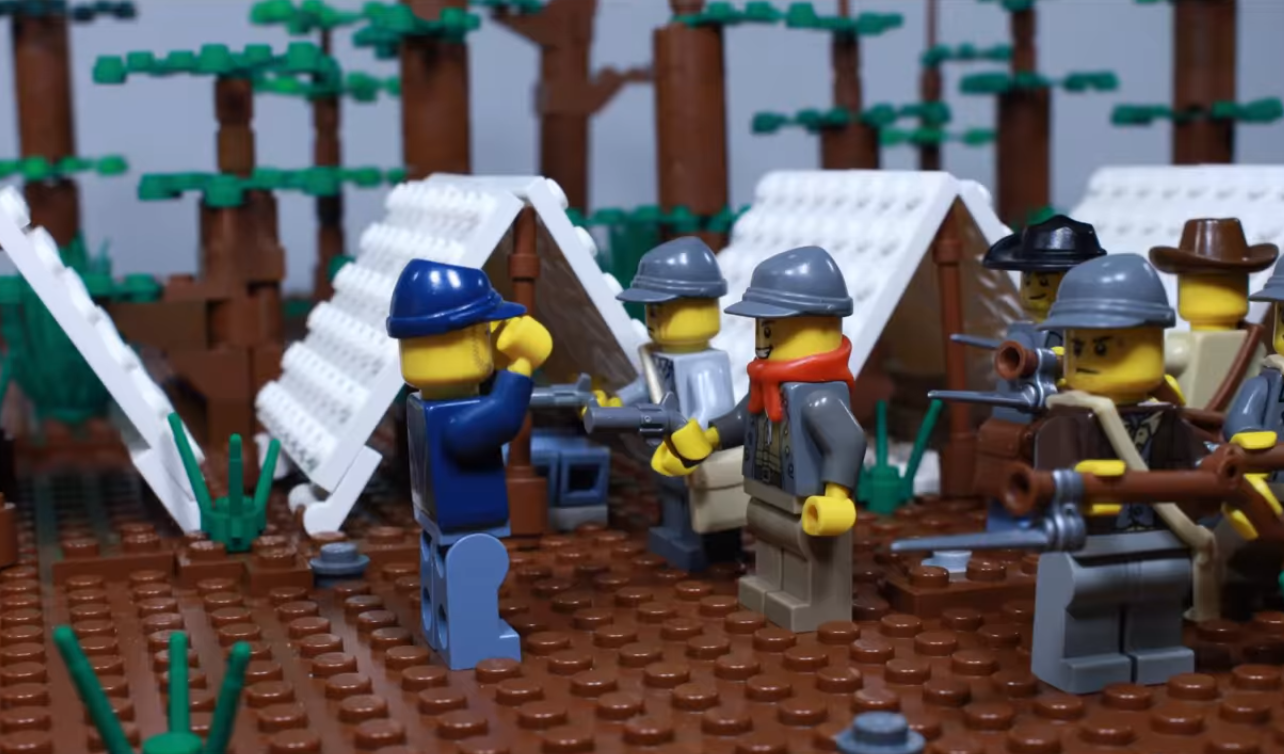
Battle of Shiloh – American Civil War Lego Reenactment
The Battle of Shiloh, also known as the Battle of Pittsburg Landing, was a major engagement that took place during the American Civil War. It occurred on April 6-7, 1862, in southwestern Tennessee near a small church named Shiloh. This battle was a significant early clash in the Western Theater and had a profound impact on the war’s course. This educational guide provides an overview of the Battle of Shiloh, its historical context, key figures, and its consequences.
1. Historical Context
At the beginning of 1862, the Civil War was still in its early stages, and both the Union and Confederate forces were eager to gain strategic advantages. Union Major General Ulysses S. Grant had planned an offensive along the Tennessee River to capture key railroads and the Confederate rail center at Corinth, Mississippi. However, Confederate General Albert Sidney Johnston sought to disrupt Grant’s plans by launching a preemptive strike against the Union forces.
2. The Battle
On the morning of April 6, 1862, Johnston’s Confederate army launched a surprise attack on Grant’s forces camped at Pittsburg Landing. The initial Confederate assault caught the Union troops off guard, pushing them back and causing confusion. The first day of the battle saw intense and chaotic fighting across the battlefield.
Despite the initial setbacks, the Union forces managed to regroup and establish a defensive line. Throughout the night, reinforcements arrived to bolster Grant’s troops.
On April 7, the Union launched a counterattack with the support of General Don Carlos Buell’s Army of the Ohio. The tide of the battle began to turn in favor of the Union, and the Confederate commanders decided to retreat.
3. Key Figures
- Ulysses S. Grant (Union): A future Union general-in-chief, Grant’s leadership during the battle would later shape his reputation as a skilled military commander.
- Albert Sidney Johnston (Confederate): The highest-ranking Confederate officer to die in battle during the Civil War, Johnston’s death on the first day of the battle was a significant loss for the Confederate cause.
4. Impact and Consequences
The Battle of Shiloh had several important consequences:
- Casualties: The battle resulted in a staggering number of casualties on both sides, with over 23,000 killed, wounded, or missing. This shocking loss of life highlighted the war’s brutality and set a somber tone for the rest of the conflict.
- Strategic Significance: Despite heavy casualties, the Union victory at Shiloh boosted Northern morale and demonstrated that the Confederacy could be defeated. It also solidified Grant’s position as a key Union general.
- War Strategy: The Battle of Shiloh provided valuable lessons in military strategy and tactics, influencing the way both sides approached subsequent battles.
- National Impact: The battle’s scale and intensity shocked the nation and brought home the reality that the Civil War would be a long and costly struggle.
Conclusion
The Battle of Shiloh was a pivotal moment in the American Civil War, with far-reaching consequences for both the Union and the Confederacy. It revealed the human cost of the war and the determination of the soldiers on both sides. The battle’s impact on strategy, morale, and national consciousness made it a significant turning point in the conflict and underscored the war’s profound significance in shaping American history.

